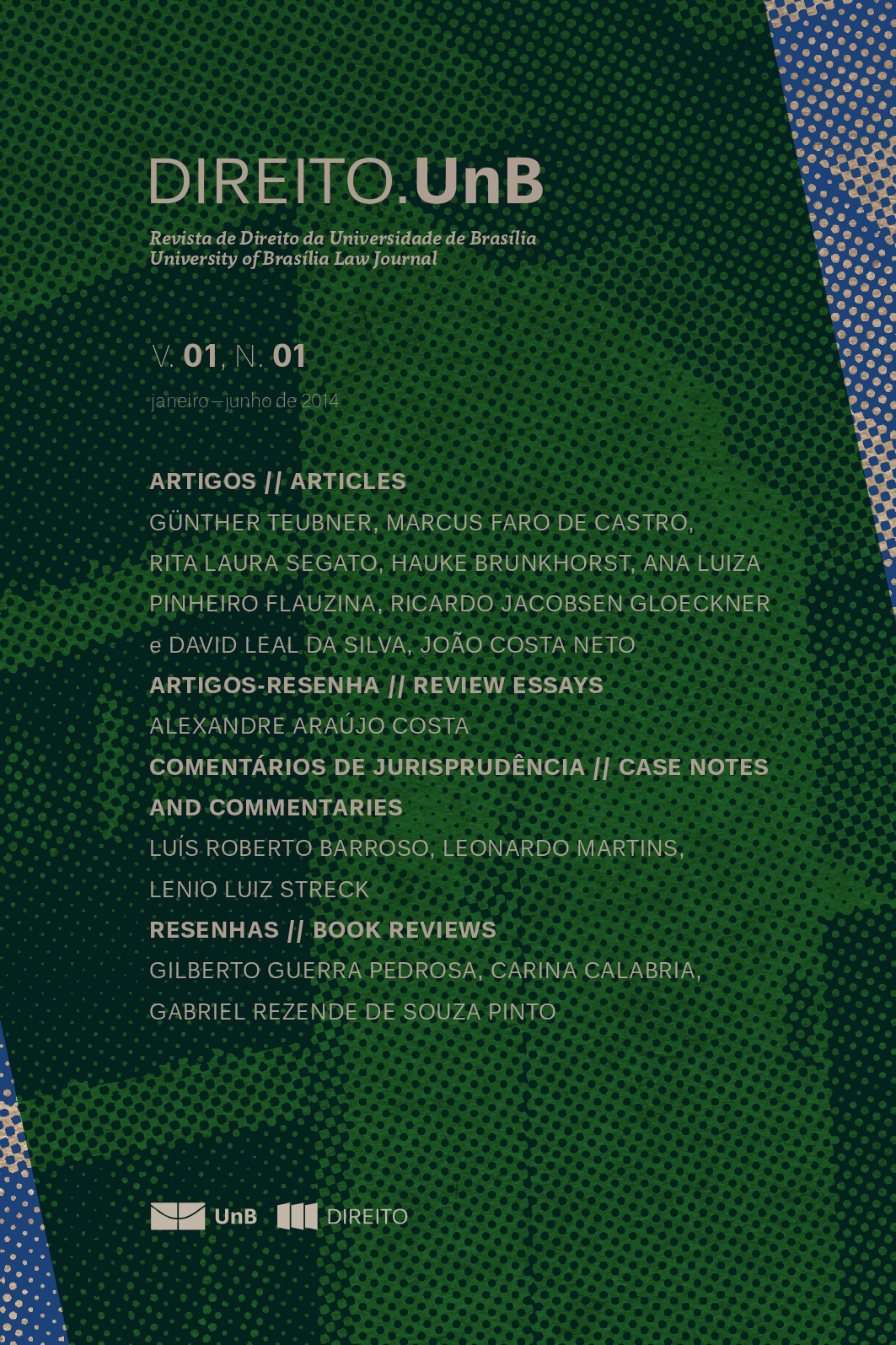The recognition of stable civil unions between same-sex partners as a fundamental right by constitutional justice
Keywords:
Constitutional protection of the stable civil union, stable civil union between same-sex couples, institutional guarantees as a category of fundamental rights, interpretation according to the constitutionAbstract
In its ruling concerning the interpretation of the institution of family law established by the constituent from 1988 (article 226, § 3 of the Brazilian Constitution) and reiterated practically ipsis litteris by the civil legislator from 2002, the Federal Supreme Court (STF) intended to present a political and legal mark in favor of a (fair) political claim. With its strategic attempt to give a systematic interpretation for this specific constitutional provision, aiming to make the special constitutional protection to heterosexual unions go beyond its restrictive meaning to also encompass homosexual unions, the STF did not reach its goal, especially not from the juridical and constitutional point of view and probably also not from the political point of view, as evidenced by the comments developed in this article. Especially embarrassing is the lack of comprehension or the misunderstanding by the Court about the reach of fundamental rights, which must serve as its decision-making parameter and, especially, the distinction between fundamental rights of freedom and equality, on one hand, and institutional guarantees, on the other, as in the case of the institution of stable civil unions. In addition, as it has been happening lately in the STF’s jurisprudence, the use of the legal-dogmatic figures with Germanic origin known as “interpretation according to the Constitution” remains skittish. It has also been recurrent some rhetorical excesses, with barely disguised supposed erudition and mastery of German constitutional law. This article reveals the theoretical, legal, dogmatic and methodologically rigorous approach given by the Federal Constitutional Court of Germany to a very similar case, compared to which the dogmatic and political deficiencies and inconveniences in the STF’s ruling here in question become clear. It is not about being pro or against the judicial activism of the STF under politically controversial issues, but requiring some accuracy, at least legal-dogmatic and methodologically speaking. The Federal Supreme Court also - and specially - has this burden.
Downloads

Downloads
Published
How to Cite
Issue
Section
License
Copyright (c) 2014 Direito.UnB - Law Journal of the University of Brasília

This work is licensed under a Creative Commons Attribution-NonCommercial-NoDerivatives 4.0 International License.
Autores que publicam na Revista Direito.UnB concordam com os seguintes termos:
- Autores mantêm os direitos autorais e concedem à revista o direito de primeira publicação, com o trabalho simultaneamente licenciado sob a Licença Creative Commons - Atribuição-NãoComercial-SemDerivações 4.0 Internacional que permite o compartilhamento do trabalho com reconhecimento da autoria e publicação inicial nesta revista.
- Autores têm autorização para assumir contratos adicionais separadamente, para distribuição não-exclusiva da versão do trabalho publicada na Revista Direito.UnB (ex.: publicar em repositório institucional ou como capítulo de livro), com reconhecimento de autoria e publicação inicial nesta revista.
- Autores têm permissão e são incentivados a publicar e distribuir seu trabalho online (ex.: em repositórios institucionais ou em suas páginas pessoais) a qualquer momento após à definição do processo editorial.
- Autores concordam que, eventualmente, seus trabalhos poderão ser agregados pela Revista Direito.UnB às bases e sistemas de informação científica existentes (indexadores e bancos de dados atuais) ou que existam no futuro (indexadores e bancos de dados futuros). Os detentores dessas bases de dados terão a possibilidade de realizar as seguintes ações sobre o artigo:
- Reproduzir, transmitir e distribuir o artigo, no todo ou em parte sob qualquer forma ou meio de transmissão eletrônica existente ou desenvolvida no futuro, incluindo a transmissão eletrônica para fins de pesquisa, visualização e impressão;
- Reproduzir e distribuir, no todo ou em parte, o artigo na impressão;
- Capacidade de traduzir certas partes do artigo;
- Extrair figuras, tabelas, ilustrações e outros objetos gráficos e capturar metadados, legendas e artigo relacionado para fins de pesquisa, visualização e impressão;
- Transmissão, distribuição e reprodução por agentes ou autorizada pelos proprietários de distribuidoras de bases de dados;
- A preparação de citações bibliográficas, sumários e índices e referências de captura relacionados de partes selecionadas do artigo;
- Digitalizar e/ou armazenar imagens e texto de artigo eletrônico.





